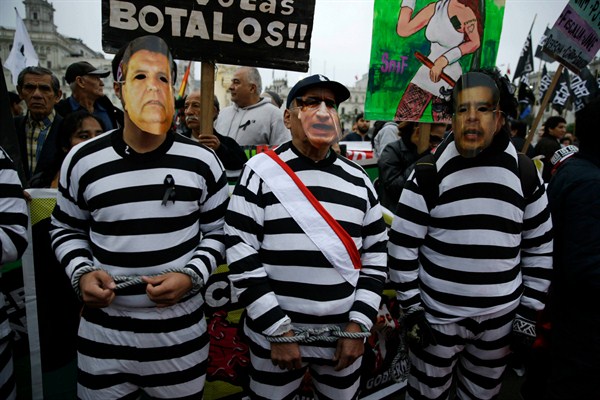Peru’s Martin Vizcarra traveled one of the more unlikely paths to the presidency. When he assumed office suddenly and unexpectedly last March, more than 80 percent of Peruvians said they did not recognize his name. As he approaches six months in power, the soft-spoken accidental president is hitting his stride, leading some skeptics to think he has a chance, though no guarantee, of actually completing the three years left in the term of the president he replaced. Some Peruvians now say there’s even a possibility that he will do more than keep the seat warm for his successor, and may just manage to make a significant, positive difference. It all comes down to a single problem at the heart of many of the country’s woes: corruption.
Vizcarra was serving as Peru’s ambassador to Canada when he received the call to rush back home. Then-President Pedro Pablo Kuczynski, the 79-year-old technocrat, was about to step down, one more casualty of the sprawling corruption scandal tied to the Brazilian construction conglomerate Odebrecht that has engulfed much of Latin America. Kuczynski had selected Vizcarra, a barely known former governor of one of Peru’s most sparsely populated provinces, as one of two vice presidents. In Peru’s system, he served in a parallel position, first briefly as transportation minister, before he was forced to resign after a contentious tenure and accept the post in Ottawa.
In a short speech after being sworn in before a stunned nation, Vizcarra urged Peruvians not to give in to cynicism. That might have been too much to ask: Peru’s past four presidents are all under investigation for corruption.

